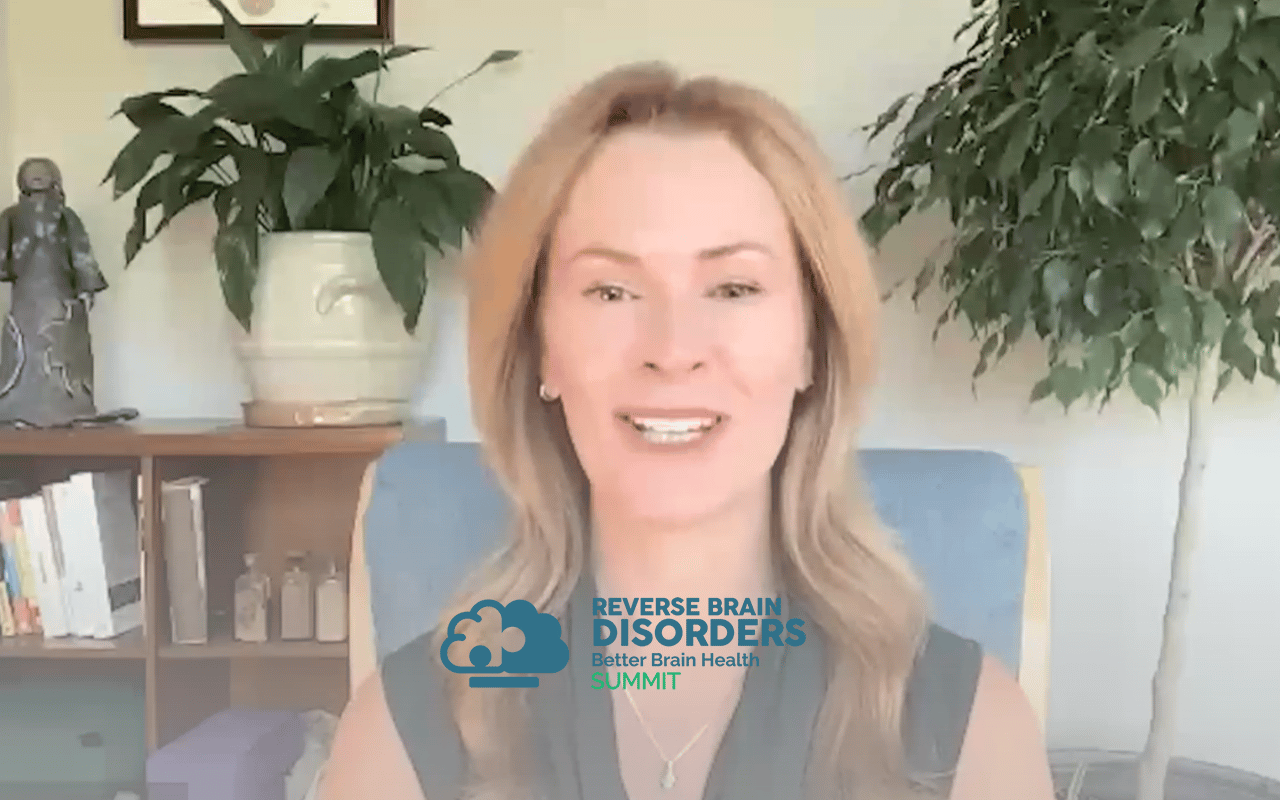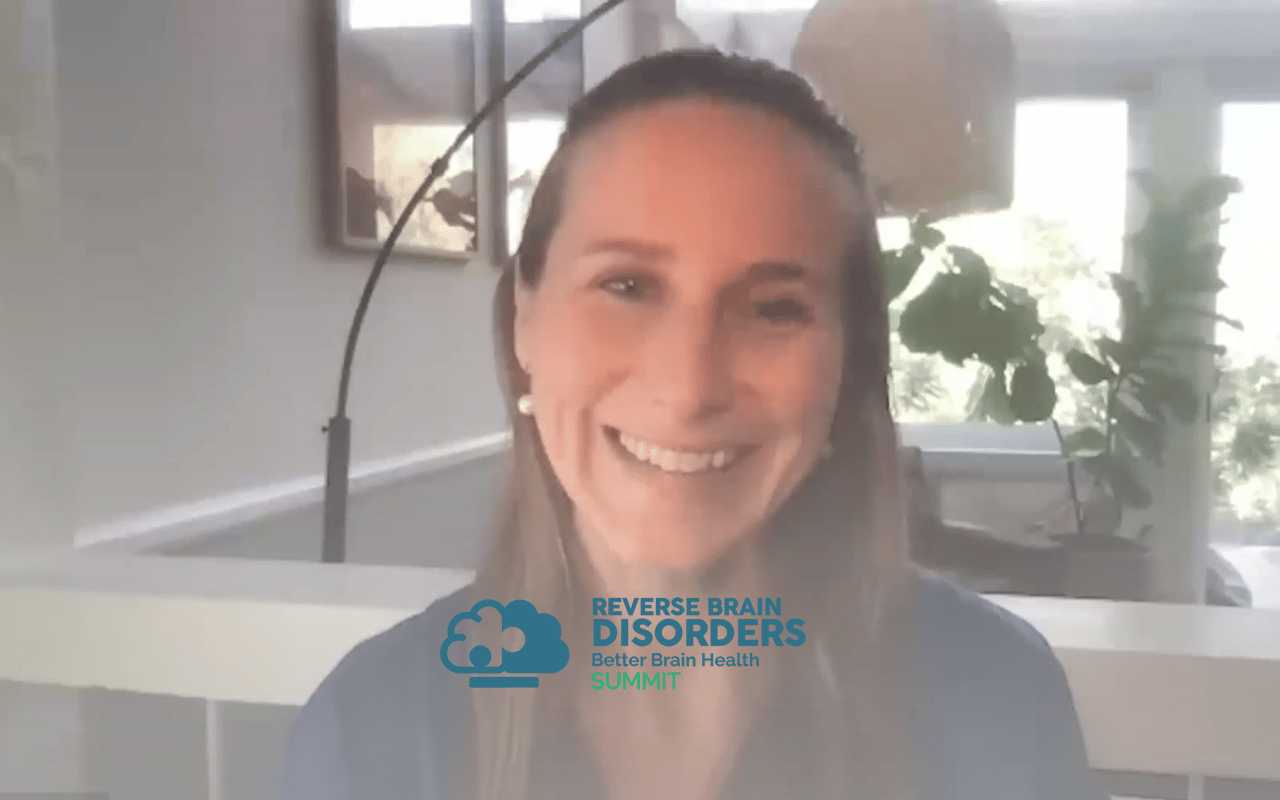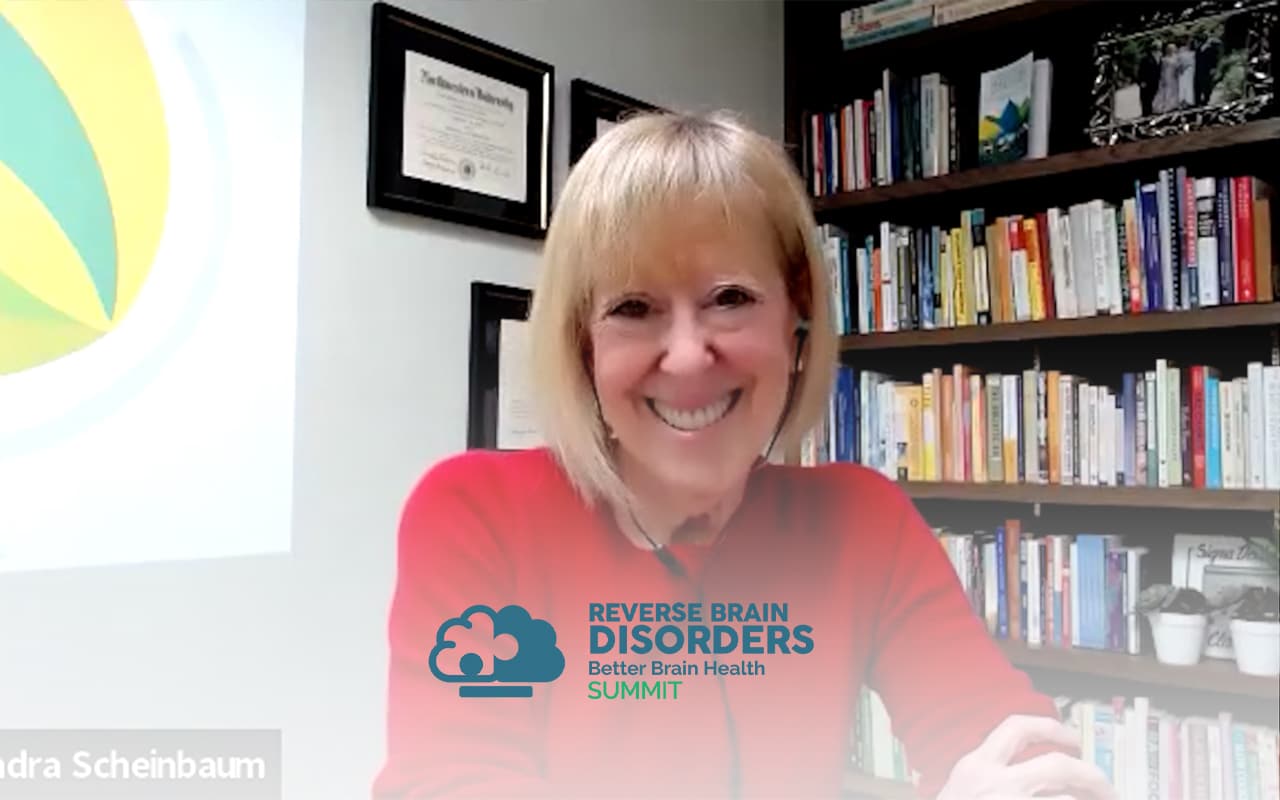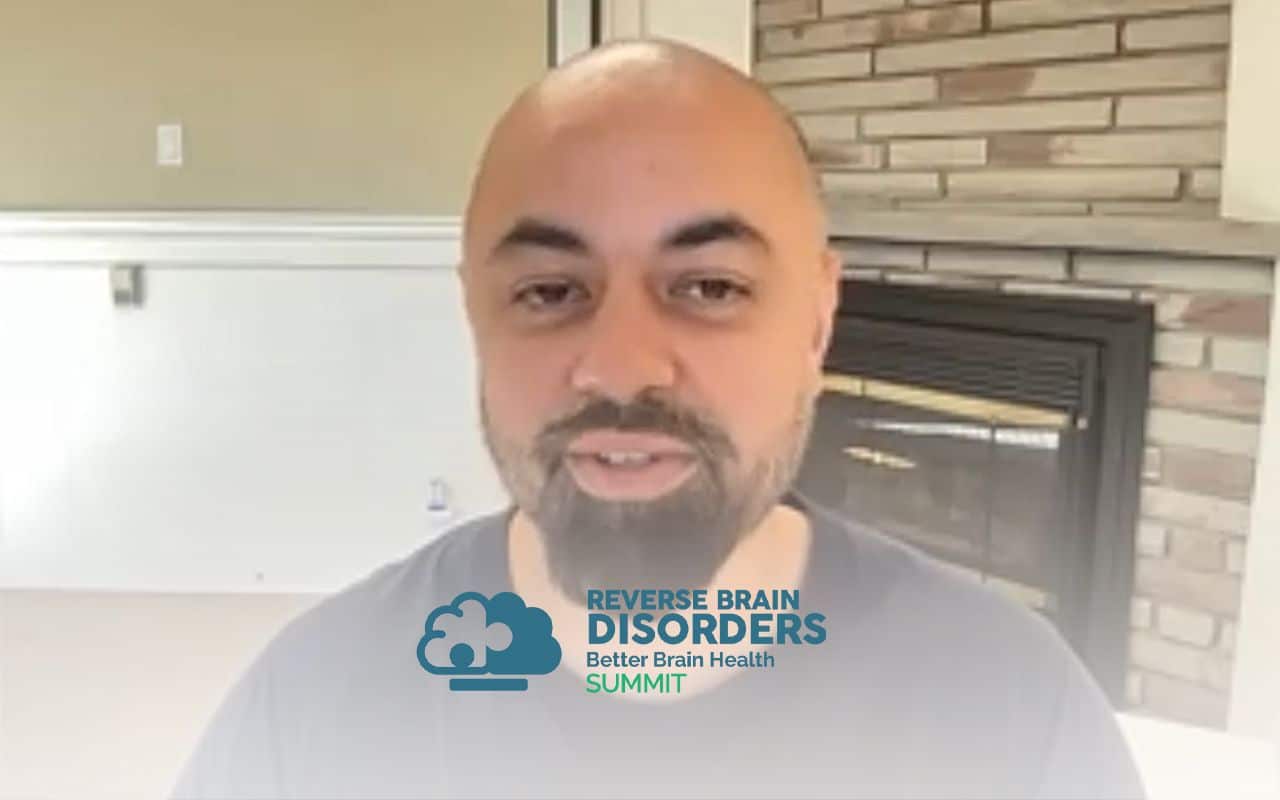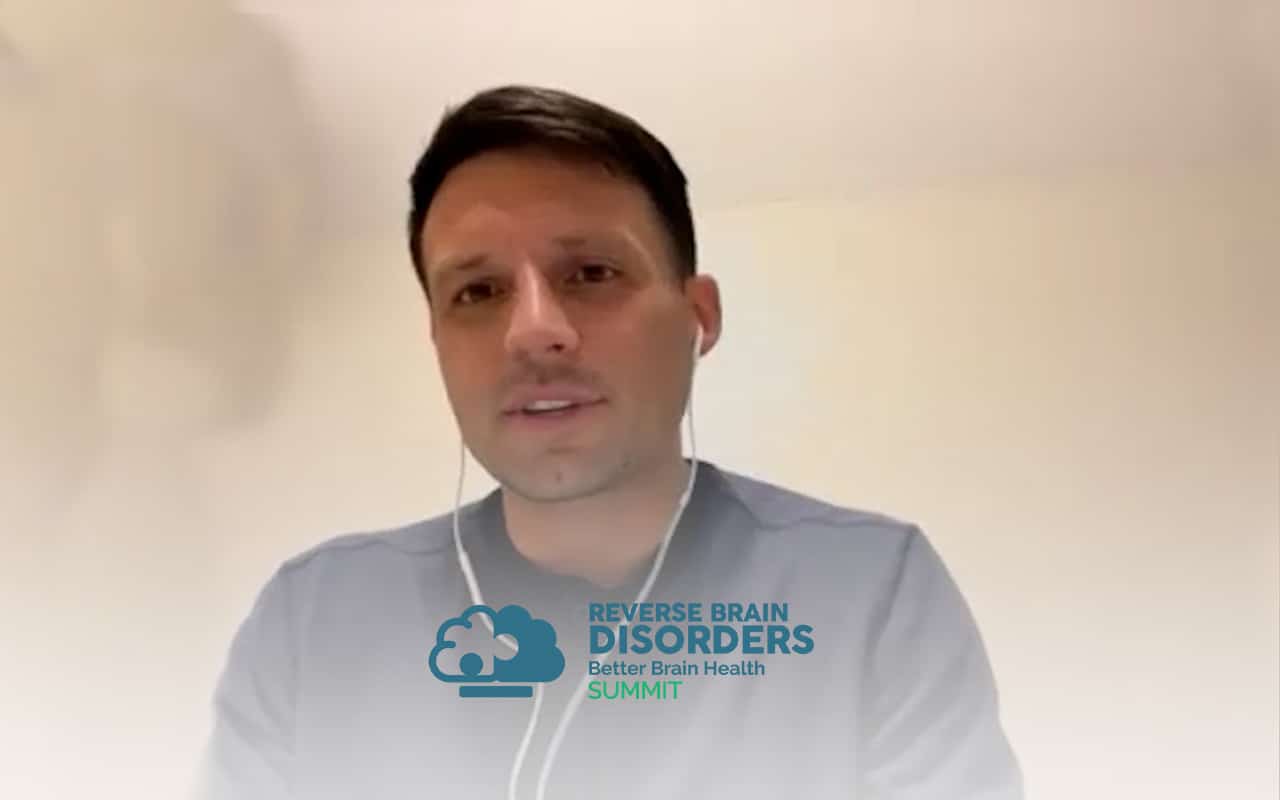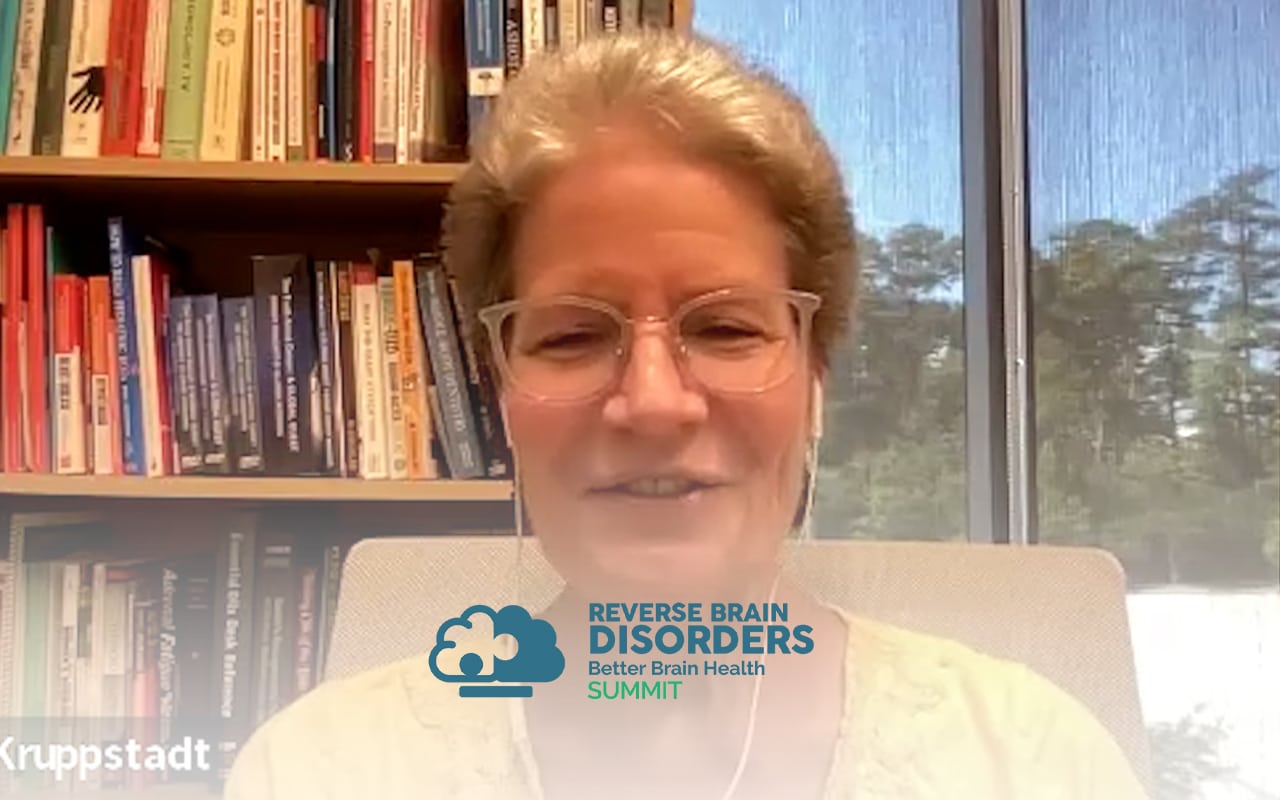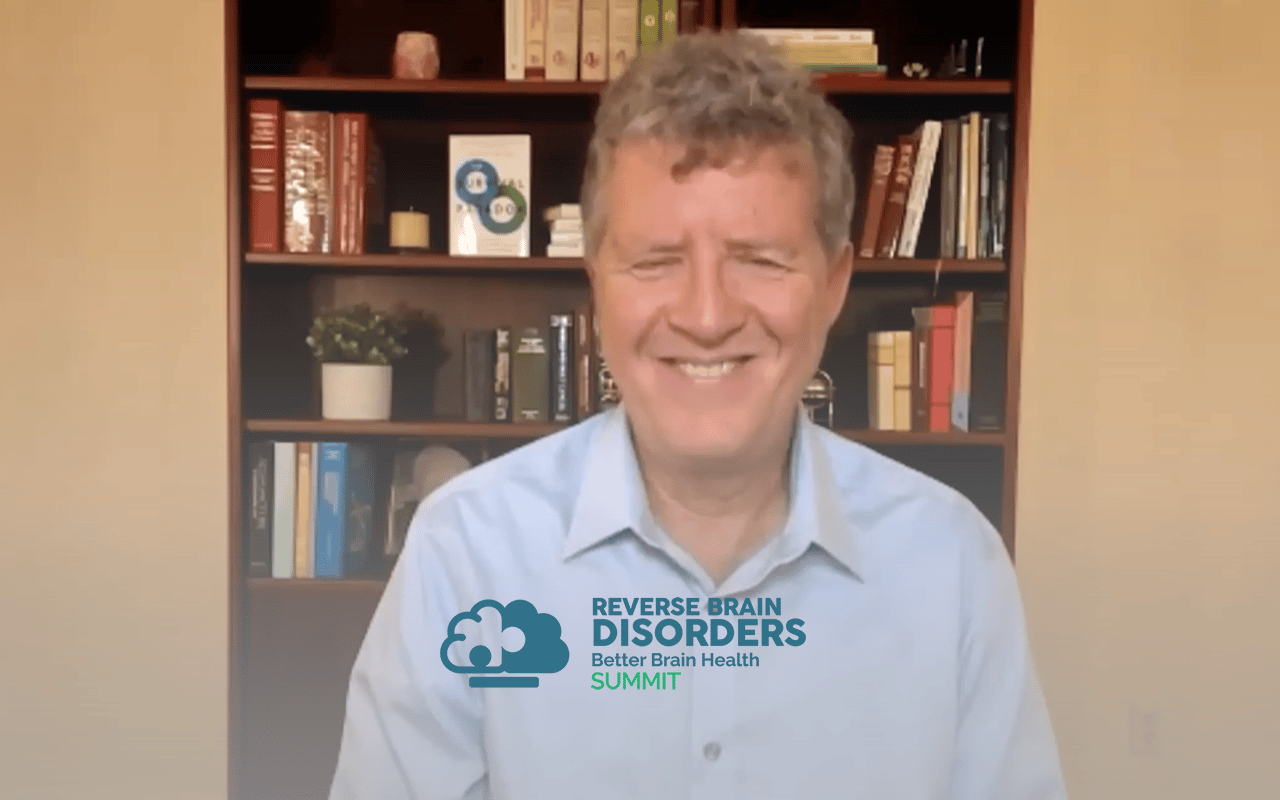Join the discussion below

Dr. Ruan is the Founder and CEO of Texas Center for Lifestyle Medicine. He devotes his career in practicing and building systems that allow for efficient delivery of healthcare. He is a board certified internal medicine physician but also have advised with companies to improve their workflow, company culture, marketing,... Read More

Dr. Barrett is an MD Neurologist who trained at Stanford. She is a headache specialist who uses both conventional and functional medicine approaches to helping patients treat their migraines. She is the Founder of Migraine Relief Code, an online course that shows people how to cut their headaches in half... Read More
- Top reasons to never ignore headaches
- Why chronic headaches is associated with shrinking parts of the brain
- How to address the different type of headaches and never give up
Cheng Ruan, MD
You know, we can’t talk about the brain without addressing headaches right now, I’m going to introduce someone very special Dr. Amelia Scott Barrett, she’s a Stanford trained neurologist who teaches the latest brain science to people with headaches and this information really empowers people to really get the most effective tools for headaches but also change their lives by utilizing these tools over a lifelong journey to really revealed how the brain can heal and how the head can heal as well. Dr. Barrett graduated from uh from smith College with honors in psychology and attended the University of Colorado School of Medicine.
She completed her residency at Stanford University and returned home to Colorado where she founded Rocky Mountain neurology and she continues to see people with headaches. She founded the Migraine Relief Code in 2019 with the mission to really help people with chronic headaches get their lives back that lives in Denver as three beautiful Children in high school and college. She enjoys yoga and cooking and me meeting new people. What we’re going to cover today is something that I think everyone should really learn and understand all the topics that we go over today is something that I practice myself with my family and my friends as well. I can’t wait for you to hear Dr. Barrett talk about this. I’m so excited to have you on. This is amazing. So welcome to the show.
Amelia Scott Barrett, MD
Thank you. It’s a pleasure to be here.
Cheng Ruan, MD
So I was on your website earlier and one of the things that really stood out to me and that really resonated to me, is that a lot of people with headaches just take medications, cover them up. Like why not just do that and get on with life? What’s up with that?
Amelia Scott Barrett, MD
Well, I I think that approach works great if you have like a couple of headaches a month, but you know, I’m a neurologist, those aren’t the people I see. So the people I see are having more like a couple of headaches a week. And the problem that we get into is that when the headaches are that frequent, the brain itself starts to change so that even when you’re not having a headache, your brain is firing differently than the brain of someone who’s only having one or two headaches a month or who doesn’t get any. So that is really the problem right there. And so what we see happen is that people are getting a couple of headaches a week. They’re taking medication to make it go away. But their brain is still changing.
It’s honestly a little bit like when you learn to play the piano or something like that. You know, you keep practicing over and over and then you get really good at it. It’s the same if your brain keeps practicing having headaches over and over, it gets really good at it. It starts to wire the genetics start to make all those proteins and enzymes and and and and that turns into its own problems. So this all sort of comes up for me because I’m seeing people where the medications just aren’t working anymore. So that’s a big factor. Or they take medications but they get side effects. So that’s a factor too. And the reason usually that the medications stop working for them is because their brain is actually starting to change .
Cheng Ruan, MD
Right and one of the most interesting things in my practice and look at E. G. S. And quantity TGS all day long. So most of the patients that I see I have their key g before me before I even step into the room and meet them for the first time. So and then I’m one of the first things that come up that I look at with these patients after I look at their uh their brain mapping is the way usually when I walk in to the room they have to turn around to look at me. So a lot of people are like doing this And so that’s one of the things I observed because whenever I see someone like that their brain fires on beta regions super high firing frequencies. So I’m like I bet you this person has headaches or I bet you this person is chronic pain and I bet you’ve been going on for years because they’re just stuck. You can see that on the E. G. So what you just said really resonated with me is the fact that the brain’s physiology is so different and it’s not like headaches and brain are two separate things we’re all connected together. So that’s amazing you know.
Amelia Scott Barrett, MD
Yeah. Yeah. And you know even with functional M. R. I. So many other tools we have these days have really a bunch of convergent data all pointing in the same direction. Yeah.
Cheng Ruan, MD
Absolutely. So one of the other talks in the summit we actually discussed how chronic pain especially headaches affects relationships. And what I often find and maybe you as well with your patients is that relationships really start to suffer and people feel really isolated because the pain and headaches. Do you find that to be true for a lot of patients?
Amelia Scott Barrett, MD
Absolutely. And you know part of what’s going on with that is that the underlying structure of the brain is changing. It makes people have more brain fog. It makes people have more anxiety, more depression, pork, quality sleep. You know these are all of the other symptoms that start to go along with the headaches. When those pain pathways start to become damaged almost. You know it’s reversible but damaged in air quotes as a result of living with that chronic pain. And yeah we see that in relationships for sure.
Cheng Ruan, MD
Yeah. So we shouldn’t be relying on pills all the time. Like what do we do? How do we figure this out?
Amelia Scott Barrett, MD
So I think that this is actually a massively under recognized area in conventional medicine and part of my mission is to definitely raise awareness. so that people understand and that taking pills a couple of days a week is not, it’s not no big deal. I, you know, I have people come into my office all the time who are like, yeah, I have headaches 10, 15 days a month, but it’s fine. I take my medicine, I power through, I still take my kids to soccer, I still go to work, I have to do things five times, but I still get my stuff done, you know, and there it’s almost like there’s not a validation that that that that’s not okay, that’s not optimal, that’s not where we want to be. And so I I think it starts with letting people know, you know through venues like what you’re doing, that, that that’s not what we’re shooting for. There’s stuff going on under the surface when we, you know, lift the hood and take a peek that really needs to be fixed. So, I I think awareness is absolutely the first step that if you’re living in that state, things could be so much better for you.
Cheng Ruan, MD
So what are like the most common causes you see for these unrelenting headaches,
Amelia Scott Barrett, MD
You know, there are so many, I think that there are a lot of nutrient deficiencies out there that are contributing to headaches. so I think it’s important to figure those out. and for many people there can be toxins accumulating in the body. Many people with migraines have mutations in their detox pathways and so they’re just more susceptible to all of the toxins in our world. Some of them are things we’ve heard of like mercury or things like that. Some of that I think honestly hasn’t been figured out yet but when we detox people they start feeling amazing. and then I think that you know there are a lot of times it is this problem that the brain has become rewired because of the chronic pain. And so just like an analogy about how this works that we’ve learned from functional M. R. I. I like to think of the brain as a symphony.
Okay and so you’ve got the conductor and then you’ve got all the other different areas of the brain, you know the percussion, the strings etcetera. And what we see on functional M. R. I. is that the conductor parts of the brain are gone. They’re the conductors out to lunch. Those parts of the brain are under firing, they eventually become smaller and our job is to help people fire those surf, start re firing those circuits. So neurons that fire together wire together and eventually those parts of the brain start to come back online and then they start to grow in size and then we can help normalize the pain pathways and so often times that the issue
Cheng Ruan, MD
Grow in size, just saying like parts of the brain can actually grow or the function can actually grow,
Amelia Scott Barrett, MD
Yep. Absolutely. So, and this is something, you know that newer in terms of our understanding of how the brain works, it’s part of the neuroscience that has come about in the last couple of decades. That really helps us understand what it is that’s going wrong in the brain and how we heal it. I think that, you know, when we fall down and skin our knee, it’s super obvious that the knee heals the brain is just a little more hidden in here, right? We needed more tools to figure out how the brain really heals. But yes, absolutely. When neurons fire together, they wire together the connections become more dense between the neurons. You know, if you can imagine maybe two neurons connected like this, they’ll become connected like this as you continually fire Yeah, they fire those circuits and then when you bring the conductor back online and the conductor can organize okay, percussion, you do this strings, you do the, you know, and then the whole brain is operating the way it was intended to. So you really can bring those parts of the brain back online through conscious intention. Very targeted types of things. But it is possible to do that and rewire back to a healthier place.
Cheng Ruan, MD
That’s amazing, you know, another part of the summit I interviewed Dr. Bruce Wexler who coined this term bray Systems in the publication in 1986 when he was a Yale or Harvard, I can’t remember. And so he talked about these sort of brain systems are working together. It sounds like the symphony that you’re talking about. You know, it’s not like one or two neurons, you know, it’s really an entire system and we have to really address the entire system, like from a holistic process for that to really heal. So that’s beautiful, you know, so how important here’s here’s my here’s my, you know, I see a lot of people and not just patients with my family, especially my family actually, who kind of have this understanding, their headaches are just headaches, they’re gonna put up with that kind of power through the day. and that and that if someone has a headache, you know, a lot of people that are, that are my family just kind of hide it. I’m gonna go to dark and a little bit and I’ll power through and I don’t feel like that’s really spoken out loud, even within family systems, and I’m sure it’s not even spoken about within their friends. People don’t like to talk about headaches. Why do you think that is?
Amelia Scott Barrett, MD
Well, I think that that is complicated. I think that on the one hand, there is sort of a dismissive attitude about headaches in our society. And and and absolutely that idea, you know, just put up with it, power through it, take a pill and go do what you need to do. And you know the vast majority of headache sufferers are women. And so a lot of times that’s you know I still need you to get dinner on the table, I still need you to get to the grocery store, I still need you to keep up with the social plans, you know and I’m I’m saying it as if somebody else is speaking to them. But I think women do this to themselves also. We are expected to be caretakers. It is part of what we do and love to do, but also there’s so I think that they’re you know, a couple of different things happen. Number one, everybody thinks it’s no big deal. Number two, we push ourselves really hard to continue giving to our Children, our jobs, our husbands, our families, our partners, you know, whatever it is. And so those two are pretty strong factors that result in people downplaying the impact of the headaches on their lives.
Cheng Ruan, MD
Yeah, I totally agree with that. Yeah, let’s talk about the different types of headaches because I think headaches is one giant category. a lot of let’s start with migraines, how are migraines different from other types of headaches and what are the classifications you think?
Amelia Scott Barrett, MD
Yeah, so migraines, you know are defined as generally one sided headaches associated with nausea or vomiting, light sensitivity, sound sensitivity, they tend to last between four and 72 hours. You know, those are sort of our diagnostic criteria and you know I think really there are lumpers and splitters in medicine. You know people kind of try to put everything into one category and then people who try to split it out into a bunch of different definitions. I’m definitely a lump. Er I see chronic headaches as being a lot of the same circuits and problems going on in the brain regardless of whether it started off as migraine or a tension headache. and just you know, for the purposes of clarifying the definition, a tension headache is typically both sides.
Often a band around the head, you don’t tend to get that nausea or vomiting light sensitivity or sound sensitivity, you know, tends to come on at the end of the day. They’re typically shorter, less severe than migraines are. But I think regardless of what the headache type is, what matters really is the frequency and the impact on your life and if they are getting more frequent and they’re starting to make it so you can’t do the things you want to do. That’s when bells need to go off in your head and say whoa I need to go do something about this. So for me frequency and severity matters almost just as much as what is it that’s causing it. I mean excluding things like brain tumors of course, you know, you need to go to your doctor and figure that out. But you know, once the biggies have been excluded, I think the big drivers of the changes in the brain are really the frequency and severity.
Cheng Ruan, MD
Right? Absolutely. And a lot of people listening to this, I have been to doctors, they probably even had mris and it was negative. Right? And so because of that, hey, we know it’s not a tumor, but we don’t know exactly what it is. So they kind of end up, you know, watching our show here saying, so here’s the thing, you know, I think that you’re right about the lumpers and splitters. So I’m, I’m also a guy kind of lump things in. I think part of the reason is because you and I both believe in what you call the symphony analogy. Right? Hey, the strings are out of tune. It’s not like there’s a violin that’s missing. The strings are added to this whole section. Right? So the entire sections are out of tune.
And so as we look at headaches and one of the reasons, you know, medicine that we split things into different categories. One is data collection uh, and two is targeted pharmaceuticals for FDA approval. And so a lot of the splitting into different sections. This is designated for a specific diagnosis for a specific drug that can go under development and clinical trials, you know, 1234 and then develop a drug pharmacology, University of Houston. So that’s sort of the discussion behind that, right. And then. But from a holistic standpoint, if the brain is wiring in a particular way, it can precipitate migraines, it can precipitate tension headaches, it can precipitate cluster headaches and whatever things that we want to split into. Right? And so let’s talk about the similarities between them and one of the things that we mentioned in the previous talk is something called the glimpse fanatics that we kind of introduced this concept. Can you talk about how the lymphatic will really relate to headaches?
Amelia Scott Barrett, MD
Oh, I would love to. Alright, so the lymphatic system was discovered in the space of my career. This is a brand new concept in neuroscience that is incredibly important for those of us with chronic headaches to understand, I think that everybody who has migraines or frequent headaches understands intuitively, the link between sleep and headache if we don’t sleep well, we are much more likely to get a headache the following day. If we have a headache, sleep will often take it away and here’s why so any kind of headache migraine in particular shuts down the lymphatic six. This is incredibly important for people to know. It shuts down the lymphatic. Now the lymphatic star like the trash truck of your brain is clearing out all the inflammation all the beta amyloid, all the other byproducts of metabolism in your brain. Your brain takes up 20% of your energy.
There’s a lot going on up here. It needs a really good trash truck and if you’re having headaches it shuts down your lymphatic six. the lymphatic kick in and kind of go into high gear at night to help clear out your brain. So that’s why number one, if you’re noticing a link with sleeping headaches, it could be because you need that Glyn fanatic clearance to get rid of all the trash in your brain. And number two, it’s more pronounced for people who are having headaches because they’re shut down part of the time. So that stuff builds up more, you need that sleep even more to be able to clear everything out so that I think is really, really important for people to understand. you know, we live in a culture where people brag about, oh I only need five hours of sleep or whatever, but you know, we’ve done very detailed studies and those people are just fooling themselves. You know, you know, when you do sophisticated testing on them, they’re basically performing like drunk drivers. You know, it’s not not a good thing to miss out on your sleep.
Cheng Ruan, MD
High. Are the lymphatic only surrounding the brain?
Amelia Scott Barrett, MD
Well, as we conceive of them with regards to clearing the trash trucks out of the brain. Yeah, so they come in fluid comes in along the outside of the arteries, arteries, bring blood in, it washes across the brain tissue and sweeps away all the toxins and then drains out along outside of the veins, which is why it was so tricky to find them because it’s not a whole separate structure like the lymphatic in the rest of the body, which clear stuff out of it. Like it’s its own separate structure. You can see it, the lymphatic, it’s not that way. We now have sophisticated tools and we’re able to see it and now we’re just starting to understand it. So it’s related to but different from and it was harder to find.
Cheng Ruan, MD
And I guess there’s no medicines that can clear the lymphatic or anything. right? Theoretically. What could be happening on is people kind of cover up these symptoms with medicines over a long period of time that lymphatic can get really backed up. Now there’s a whole lot of trash going on in the brain, right? And those toxins build up and eventually they turn into neurodegenerative diseases. Alzheimer’s and etcetera etcetera, right?
Amelia Scott Barrett, MD
Yes. And you raise a really important point, like headaches aren’t the only outcome of all the trash building up in your brain. There is a clear link with alzheimer’s and the accumulation of beta amyloid and disruption of lymphatic function. So, you know, it’s it’s it’s a bigger deal than I think. People often realize when those, headaches start to get more frequent.
Cheng Ruan, MD
Absolutely in this discussion of amyloid, which we’ve had in multiple discussions already. It’s a big deal because you know amyloid is like the police of the central nervous system in the brain and they bind in sequestered to a lot of toxins that are in there. And it’s supposed to fold in a way where it’s supposed to be dumped mental emphatic but it doesn’t. And a lot of times. Well one specific companies recently came out with a pharmaceutical drug to try to unfold that system in the way where it can dump single emphatic. But the outcomes weren’t that great. And part of the reason is because there’s not really a holistic view at it rather than just looking at the amyloid dumping. And so I think that for most people, you know, headaches are actually should be seen as a huge deal. People should not play it down. And I know there’s a stigma out there saying that oh you have chronic headaches that equals weakness. That’s a very like westernized stigma. But we really have to think about headaches and very devoid and I’m glad you’re bringing you know so many things up. So earlier you talked about the actual function of the brain looking at F. M. R. I. Which is functional. M. R. I. Right, so are there studies looking at specifically brain function specifically in relation to the number of headaches per week or per month per patient.
Amelia Scott Barrett, MD
So most of the work revolves around it’s not so much, it, what they do is they look at people who are chronic versus people who are not. So and our definition of chronic for most headache specialists is now down to about 8-10 headache days a month. It used to be 15 but people are understanding that this chronic fication process is happening sooner than we realize now that we have these sophisticated tools and you know what we see is that under firing of those conductor circuits of the brain And for you neuroscience geeks out there. I’m talking about the anterior cingulate of the prefrontal cortex, the insula, those are the areas of the brain that under fire and eventually atrophy in people who are having chronic headaches. So yeah, we can definitely see now what the structural changes that happen in the brain as a result of the changes in function.
Cheng Ruan, MD
This is scary. I mean you literally have brain shrink is from headaches, you know.
Amelia Scott Barrett, MD
I know, I know, I wish everyone knew that you know I’m doing my best. You and I both were getting the message out.
Cheng Ruan, MD
Yeah. And and and I’ll tell you in the primary care setting headaches are actually really common, the primary care setting, but headaches are the number one symptom not told to the doctor because most people kind of brush it off anyways but we really have to get rid of that stigma. But but let’s talk about some success stories what we’re kind of your greatest success stories that you’ve seen of people combating debilitating headaches.
Amelia Scott Barrett, MD
Oh my gosh! So my favorite way to do this is to combine fine some medications with the science of brain healing which I translate into actionable steps for people I think when we have a fusion of everything that modern science has given us, that’s when people get the best results. So for example I was working with someone recently who told me that after three months of using this approach, her headaches were the best they had had in 50 years. That’s a lifetime. I mean and honestly that’s why I do what I do some of these stories are so powerful, it makes me cry, I’m such a wimp but I mean it’s really incredibly powerful because that you know that like what if that had happened for her 40 years ago, how much more life would that have given her? and another story that comes to mind.
I was working with a gal recently who really wanted to have a child and had a great partner in her life was all set for this but she was having headaches 34 days a week that would put her to bed and she very wisely realized you know I don’t I’m not sure I can take care of the kid with these headaches this bad, she went through the whole process and I remember one of the last zoom calls we had with her, you know there’s 10 of us on the zoom call or whatever and she shows up and says you guys, I have done so well for the past month, my husband and I have decided to go ahead and have a child and we all just collapsed. I mean it was just like such a wonderful moment, you know and think of what you know, how much life has that opened up for her to be able to have that impact and to bring these tools to her and give her something that’s going to give her life a lot of meaning. So you know and those are just some of the highlights. But I think when we use all of the tools of neuroscience and modern medicine together we can make a dramatic impact in somebody’s life in a short period of time.
Cheng Ruan, MD
That’s fantastic. And do you think that what do you think are the biggest levers to pull if you will when it comes to improving headache? Is it a diet, is it sleep like what is it?
Amelia Scott Barrett, MD
I think that the three most important areas are brain healthy nutrition and supplements. So I will let me take a step back, I divide this process into four steps. So the first step is reveal with labs to look at how the brain and the body are doing to see what clues that gives you about what’s actually, you know what’s what’s the root cause of these headaches. So you need that piece. Second step is revitalized which we do with food and supplements that are targeted towards the needs of the brain which are different than the needs of the rest of the body. This revitalized process is somewhat the same for every body but individualized based on the results of the labs. And then once we have that going in the brain has the raw materials to start the healing process. Then we start clearing out some toxins as we talked about a little bit the lymphatic as part of that. But there are several different detox systems in the body.
Our body is programmed to get rid of toxins were just so overloaded with them in our modern world, we have to work extra hard to get rid of them and extra hard if we have the, you know, problems with detox genes that so many people with migraines have and then once we’ve got that going on and things are healthier. Then we start rewiring the brain, headaches are already substantially better by this point. But and then we need to start rewiring, it’s as if the brain has learned to be good at headaches, we have to make it unlearned, we make it learn a new normal and the principles of neural plasticity help us figure out how to do that. So I think those are the biggies and honestly, I do not see this as a process where one thing works for everybody. it’s got to be individualized and I also feel like there’s problems in all three of these realms going on when we work with people. And so many people feel like they’ve tried nutrition, they’ve tried supplements and it didn’t work. So none of this stuff is gonna work. But what I tell them is, okay, so you fixed one thing, you put Michael Jordan on the court, okay, he’s still not gonna win against the other team that has 12 players. Like you need all the players on the team, It’s not 12. I’m not good at basketball, but you see what I’m saying, like you need the whole team, you need everything to be working. You know, if you fix 11 biochemical pathway with one supplement, that’s an awesome start, but that is not going to give you a winning team, you know what I mean? So that’s why I really think it’s got to involve all these different areas about how the brain heals itself and we have to amplify what the brain is naturally trying to do and help it, help it feel better,
Cheng Ruan, MD
Orchestrating the symphony, right?
Amelia Scott Barrett, MD
Yeah, Yeah,
Cheng Ruan, MD
Absolutely. So, um, there are a few things in my experience that has been pretty crucial as well and there’s some people who have issues that are outside the head that can create headaches. So spinal alignment, you know, issues that are huge. a lot of cervical spine and neck issue, especially people, you know texting all the time and stuff like that. Sleep apnea is massively huge in this arena and a lot of women undertreated iron deficiency is such a huge deal as well. And uh and and just like you said, there’s so many different things, we have to have individualized approach to it and yes, just because, you know, you did a diet for a few months and it didn’t really work out, doesn’t necessarily mean that’s not the right step. It just means that you have to have some expectations in looking at these systems that are there. But one thing that you said was interesting me is that the brain can get like primed and triggered to have these sort of reactions. So even a small trigger can trigger a bigger headache and you said that that can be untrue GERD. other specific steps, are we still talking about, you know, orchestrating the symphony of improvements for nutritionals and stuff like that? Or is it just one thing that can trigger the brain?
Amelia Scott Barrett, MD
I don’t think it is one thing I really do, but you know, you really need that full team on the court, but I’m glad you brought up this issue of neck pain and you know, posture, how we can exacerbate a lot of that because what we know is that headaches cause neck pain and neck pain and causes headaches and yeah, so I’m so glad you brought that up. I started doing yoga after I had my first kid many years ago and I eventually realized that my headaches were getting better too. So I was very curious about that because that was definitely not part of the curriculum in my stanford residency, nobody was saying do yoga right? but that was one of the first tip offs to me that like, oh yeah, the body has its own natural healing pathways and there are things we can do to tap into that. And of course now we know that there are thousands of studies demonstrating the benefit of yoga and meditation for people with chronic headaches. And that is one of the tools that I teach people. I’m a certified yoga and meditation teacher. and those are very powerful learned skills that can really move the needle for people.
Cheng Ruan, MD
And what about what about breeding, how important is the actual breeding processes? I know you teach yoga and meditation breathing is a huge part of yoga and meditation, right? How does that contribute to everything?
Amelia Scott Barrett, MD
So certain types of breathing have been scientifically shown to help shift the body from this chronic fighter flight state that people with chronic headaches are in the breathing techniques will shift them over to parasympathetic and they’re actually where variables that you can use to watch your body do this as you are learning the techniques so that you can make sure you’re doing it right and you’re getting the intended physical result in your body. But a lot of those breathing techniques revolve around slowing down the exhale and so that is the most powerful way to help your body shift. Now you can’t necessarily live in that state. But if you’re doing something every day your body will start to shift in the same way that you know if you lift weights every day your muscles will get bigger. If you do the breathing exercises every day your body will start to shift and you’ll see it on devices to track your body which is super cool. People love that.
Cheng Ruan, MD
Amazing. One of the things that we do here at Texas center for lifestyle medicine is we actually monitor, we have E. G. S on people’s brains as they do breathing exercises. And so we do remote neural feedback of home neurofeedback. So one of the coolest things that we just started doing is that when we see that people’s brains are so wired in the beta frequency they’re like all the time. Even when they have the device we’re like okay let’s let’s do literally a 62nd meditation the minute you do that all the fine just slows into the nice alpha frequencies and then and then whenever they they start breathing fast again or lose the breath and you can see the brain going directly back into the beta system, like what happened, you know.
Amelia Scott Barrett, MD
I love it. That’s fantastic. Yeah, powerful form of feedback tools.
Cheng Ruan, MD
Yeah, that’s cool to see how fast it is. Like, it’s it’s it’s like instantaneous, you know? but the fact that people are able to connect that and to bring frequency and the headaches and the breathing is just a beautiful symphony, as you said. and so the one last thing and then we’ll we’ll close it off. The last thing I want to ask you and it’s something that I asked, really common to a lot of doctors is what do you what, what is one thing that you now know as a practicing physician that you wish you knew back in residency?
Amelia Scott Barrett, MD
Oh, that is a good question. One thing that I know now, I would say, I wish that I had embraced things outside of conventional medicine earlier, because those tools are so powerful. So my experience was very much that you know, medications and surgery were 95% of what I was taught and my world view for so long was okay. These are the tools that we other tools don’t work. And so I wish that I had been exposed to or seen the science earlier to help understand how the body heals itself, because I think I could have helped a lot more people along the way. Had I come to that earlier in my career, as opposed to later. and you know, in retrospect, you know, the influence of those factors in medicine is incredibly powerful, you know, that’s what people see on tv when they’re watching their favorite show. You know, they don’t they don’t see anybody saying oh my gosh, you can grow new neurons, you can grow a new pathway, you know, it’s not on commercials. And so then I think sometimes people assume that that’s not as good or not as legit, but you know if if there was a drug that did what you know for example what magnesium can do for people with chronic headaches, you know, it would be plastered everywhere,
Cheng Ruan, MD
Right? So the last thing we tell people to do is go to this website, the headachequiz.com. It’s all spelled out the headache quiz dot com and check out what kind of headache you got going on and how it’s really affecting your life and then take some next steps. With that page and my biggest takeaway from our discussion today is that there’s so many congruence ease with what you’re saying with a dentist with psychiatry to really famous psychiatrists and another neurologist. So everyone’s saying really similar things, but in a very special way. So what we’re really realizing, you know right now, it’s 2022 going to 2023 what we’re really realizing is that the more outside the box that we come that we that we look at the more congruence is, there are, and these patterns are not are no accidents because all these professionals, including myself and you, we all arrived at very similar conclusions very independently and very separately. You know, I went through the residency and the training and stuff like that and so did everyone else. And it’s just fascinating that um, we’re really discussing the same, the same principles of health that’s really required, especially surrounding, you know, brain health and headaches and, and psychiatry as well. So I really want to thank you for coming on and taking the time out of your busy day and uh once again, go to the headachequiz.com. It’s all spelled out for your headache survey. Thank you very much.
Amelia Scott Barrett, MD
Thank you.
Downloads

